You don’t set core values, you discover core values. – Jim Collins
I often talk about Atlassian’s values to people outside the company, and the most frequent question asked is “are they real values that people live, or are they just words?” This is closely followed by “how do you get people to follow them?”, and then “how did you create them?”.
It’s important to state that we didn’t create the core values, we just articulated values that the company and the staff were already living. That answers the first two questions, I’ll answer the 3rd question in this blog.
I was in the very unique position of being at both the management development side and facilitating the staff session that we did in Sydney, so really saw the core values solidify. (Plus, I just moved desks and in the clean out rediscovered the brainstorming sheets that we did the workshop sessions on. I think they’re quite interesting to look at to see how the values evolved.)
Some background:
In July 2007 there was a lot of concern from the founders as to how the company was growing so quickly and how to retain the culture of Atlassian.
In the previous year, 2006, we had jumped from 28 people to 57 people. In the next year we knew we were going to grow – we almost doubled the number of staff and by the end of 2008 the company had grown to 97 people. We had also put in a management layer – something that the smaller sized company had not previously needed. Articulating the company’s values seemed an important building block for the future of the company.
We followed a bastardised methodology of Jim Collins‘ the ‘Mars Group’. Collins describes the ‘Mars Group’ like this – “Imagine you’ve been asked to recreate the very best attributes of your organization on another planet, but you only have seats on the rocket ship for five to seven people. Who would you send? They are the people who are likely to be exemplars of the organization’s core values and purpose, have the highest level of credibility with their peers, and the highest levels of competence.”
When you got to Mars, it didn’t matter what you were making – it could be awesome software products, it could be gumboots. We looked at those attributes we valued and listed out what was the most important, regardless of what we were making.
Stage 1 – the management team
The newly formed management team undertook this exercise and came up with a huge list of attributes that they valued in themselves and in the staff.
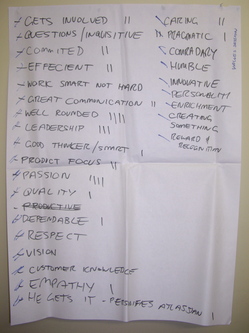
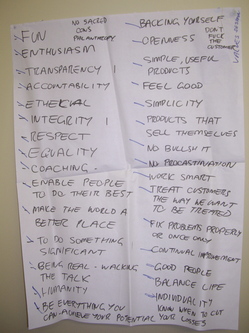
The team then distilled those attributes down to 5 values.
Stage 2 – Atlassian staff
We spent a half day workshopping the values in the Sydney office with a group of 12 employees from a variety of departments.
Mike Cannon-Brookes was thrilled to see that:
The most fascinating (and gratifying as a founder) thing about it was the huge overlap between the two lists the teams came up with (which were merged to become the above). The correlation was scary, they were almost exactly the same list.
Would you look at that:
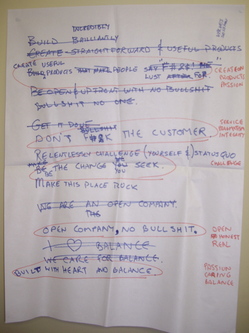
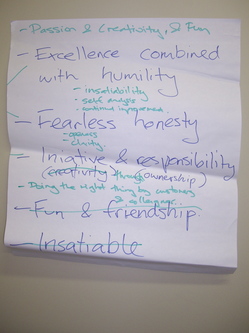
The missing element from the management team was the value that came to be known as ‘Play, as a team’, had been squeezed out to make space to include the value ‘Create useful products people lust after’. The employees disagreed that ‘Create useful products people lust after’ was core value, rather it was a purpose for the company. They also all felt that play and humour was an integral part of the company culture.
The end result
We then brought the founders into the employee group and thrashed out the wording and order of the core values. Resulting in the values, and company purpose as we know them today:
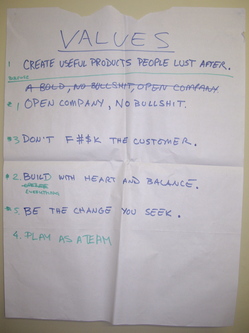
…and they all lived happily ever after.
(inspired by the the Chief Happiness Officer’s post Happiness at work at Atlassian)